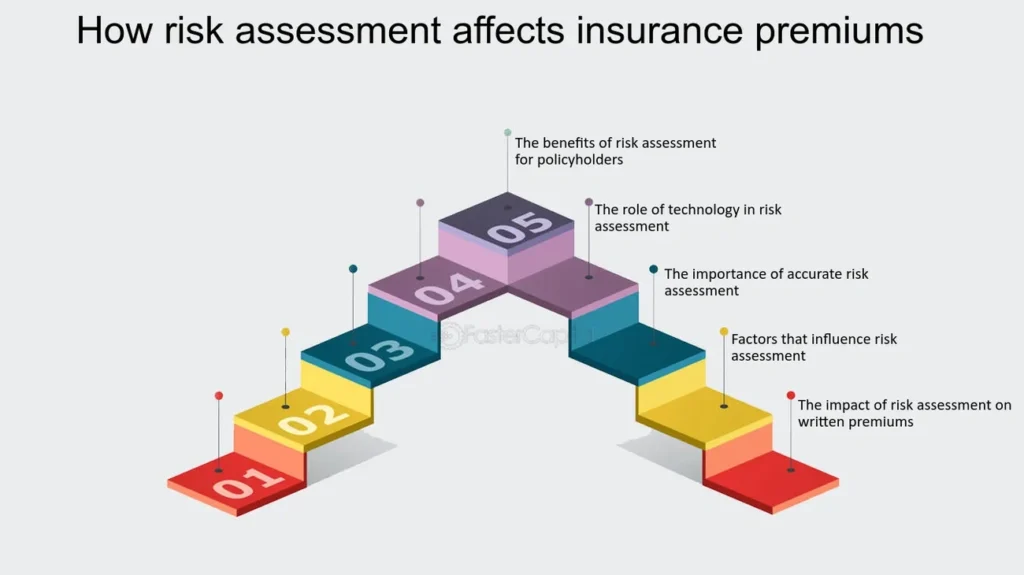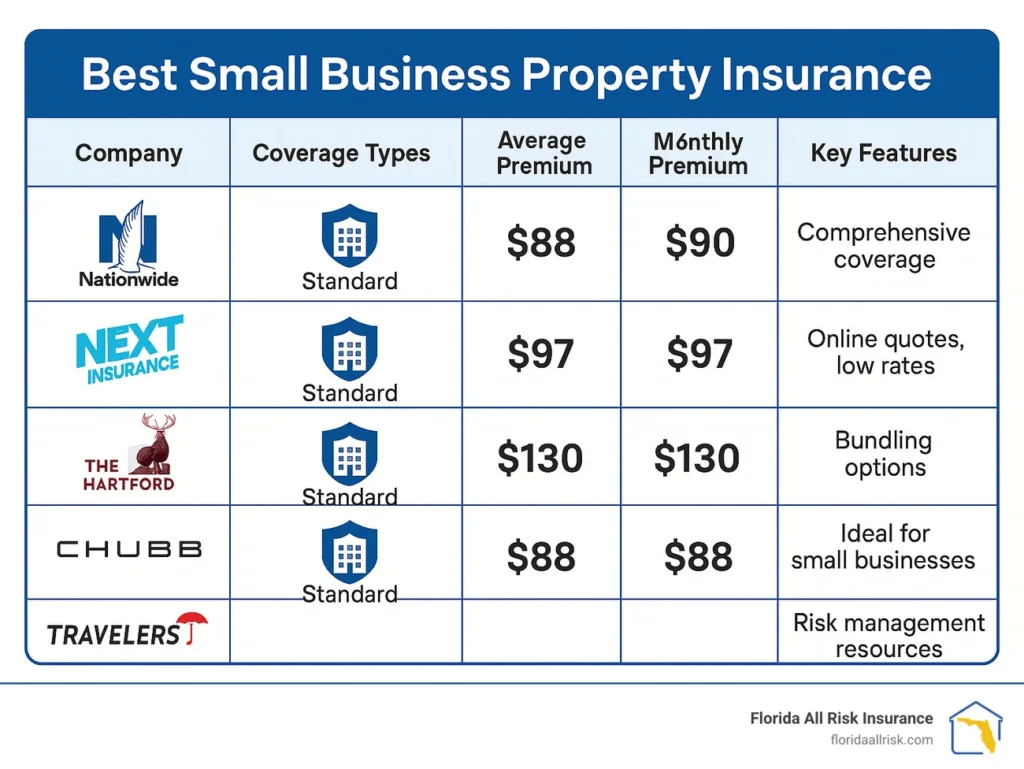Business insurance costs can vary dramatically, ranging from as little as $500 to tens of thousands of dollars per year for startups. If you’re planning your budget for the coming year, understanding these potential expenses is crucial for your financial stability.
According to industry data, general liability insurance typically costs between $400 and $750 per year for small businesses, with an average annual premium of $741. However, the cost of business insurance rates depends on several factors. On average, small business insurance costs amount to roughly $30 to $340 per month, while workers’ compensation insurance prices vary significantly by location—from $0.75 per $100 of payroll in Texas to $2.74 in Alaska.
In this comprehensive guide, you’ll discover what actually determines your business insurance price in 2025, how much you should expect to pay based on your specific situation, and practical strategies to lower your premiums without sacrificing essential coverage.
What You’ll Actually Pay for Business Insurance in 2025
Looking beyond the basic ranges, let’s examine specifically what your business might pay for insurance coverage in 2025.
Average monthly and annual costs
The typical small business spends between $500 and $3,500 annually for core coverage. Monthly premiums generally range from $42 to $292, depending on your specific risk profile and coverage needs. For most small operations, a Business Owner’s Policy (BOP) typically represents the best value, costing $50-$200 per month while bundling property and liability coverage.
Professional service providers face unique exposures, with professional liability insurance averaging $900-$1,800 annually. Notably, cyber liability insurance has become increasingly essential, with premiums starting around $1,000 per year for basic coverage.
Costs range by business size
Business size dramatically impacts insurance expenses:
| Business Size | Annual Premium Range | Key Factors Affecting Cost |
| Micro (1-5 employees) | $500-$2,500 | Limited exposure, lower revenue |
| Small (6-50 employees) | $2,000-$7,500 | Moderate risks, growing assets |
| Medium (51-250 employees) | $7,000-$30,000 | Increased liability, multiple locations |
| Large (250+ employees) | $30,000-$500,000+ | Complex operations, extensive assets |
Furthermore, businesses in high-risk sectors like construction or manufacturing can expect premiums at the upper end of these ranges due to enhanced liability concerns.
How much is business insurance for startups vs. established companies
Startups typically pay more for comparable coverage than established businesses, despite often having fewer assets. This cost discrepancy stems from their limited operating history and unproven risk management practices. New businesses might pay 15-30% more during their first year.
In contrast, established companies benefit from insurance discounts after demonstrating responsible operations over time. After 3-5 years without claims, businesses often qualify for “claims-free” discounts ranging from 5-25% off standard premium rates.
Additionally, startups often struggle with accurate revenue projections, which can lead to initial overcharging followed by premium adjustments after the first policy year.
Key Factors That Influence Business Insurance Rates

Understanding what drives your business insurance rates helps you make smarter coverage decisions. Several key factors work together to determine exactly what you’ll pay.
Industry risk level
The nature of your business substantially impacts your insurance costs. High-risk industries like construction, manufacturing, and janitorial services typically face higher general liability premiums since they deal with other people’s property and have greater potential for damage. Likewise, businesses providing security services generally pay more than those offering accounting services because of the increased risk of third-party injuries.
Business location and size
Where you operate significantly affects your rates. Businesses in flood-prone areas or wildfire zones face higher property insurance premiums than those in regions with fewer natural disasters. Moreover, local crime rates influence costs—higher crime areas mean increased risk of theft, vandalism, and property damage.
Business size also matters. Insurance companies calculate premiums based on employee count, payroll, revenue, and assets. Larger businesses typically pay more simply because they have more exposures that could lead to claims.
Claims history and safety record
Your claims history directly impacts future premiums. Insurance carriers primarily evaluate frequency and severity when calculating rates. Excessive claims will cause you to pay significantly higher premiums and can limit which carriers will even write your insurance.
For workers’ compensation specifically, your Experience Modification Rate (EMR) plays a crucial role. This metric considers your past claims history—an EMR below 1.0 means lower premiums, while an EMR above 1.0 results in higher costs.
Payroll and annual revenue
These financial metrics serve as key risk indicators. Workers’ compensation is calculated based on payroll—higher payroll means higher premiums. The National Council on Compensation Insurance defines payroll beyond just wages, including commissions, bonuses, and various forms of compensation.
Coverage limits and deductibles
Your policy choices directly affect costs. Higher coverage limits increase protection but raise premiums, whereas higher deductibles lower premiums but increase out-of-pocket expenses when claims occur. Finding the right balance between these elements is essential for cost-effective coverage.
Real-World Examples of Business Insurance Costs

Let’s explore real costs across different insurance types to help you budget effectively for your protection needs in 2025.
General liability insurance
The financial reality of general liability coverage varies by industry and business size. Small businesses typically pay between $42 and $68 monthly for this essential protection. Construction companies and restaurants often face higher premiums than accounting firms or photographers. For instance, restaurants pay approximately $2,408 annually for general liability insurance, whereas photographers pay just $437. Your location also impacts costs—businesses in highly populated areas typically face higher rates.
Professional liability insurance
Professional liability insurance costs reflect the risk associated with your advice or services. Small businesses pay an average of $61 monthly (approximately $735 annually) for this protection. Higher-risk professionals like architects and engineers pay significantly more—around $142 monthly compared to photographers or accountants who pay roughly $45. In technology fields, errors and omissions insurance averages $146 monthly. Importantly, most businesses select policies with $1 million per occurrence limits.
Cyber liability insurance
As cyber threats evolve, this coverage has become increasingly vital yet varies widely in cost. Though specific figures fluctuate based on your industry, small-to-medium businesses typically pay between $1,000 and $5,000 annually. Financial and healthcare companies face higher premiums given their sensitive data responsibilities. Many policies limit coverage for ransomware specifically.
Workers’ compensation insurance
Workers’ compensation costs are calculated per $100 of payroll and fluctuate based on workplace risks. The national average cost per claim reached $44,179 for accidents occurring in 2021-2022. Motor vehicle crashes generate the highest average claim costs at $90,914. Premium rates vary dramatically by state—Rhode Island businesses pay approximately $1,721 annually while Texas businesses average just $576.
Business Owner’s Policy (BOP)
BOPs offer cost-effective protection by bundling coverage. New businesses pay a median monthly premium of $67 (approximately $804 annually). The average BOP premium runs slightly higher at $118 monthly or $1,420 annually. Most small businesses select $1 million per occurrence limits with $2 million aggregate limits and a $500 deductible. Your industry, location, and property value directly influence these costs.
How to Lower the Cost of Business Insurance in 2025
Finding ways to save on your business insurance doesn’t require cutting essential protection. With smart strategies, you can maintain comprehensive coverage at lower prices.
Bundle multiple policies
Purchasing multiple policies from the same provider can save you 5-20% on premiums. This approach offers benefits beyond just cost savings:
- Simplified management of all policies in one place
- Potential loyalty discounts as you continue with the same insurer
- Consolidated deductibles in some cases, reducing out-of-pocket expenses
Increase your deductible
Raising your deductible—the amount you pay before insurance kicks in—can significantly lower your premium costs. This approach creates a threshold that losses must meet to make claims worthwhile. Essentially, you’re agreeing to absorb more potential risk, which directly saves the insurance company money and results in lower rates.
Invest in workplace safety.
Companies that prioritize safety enjoy lower insurance premiums across all coverage types. Effective safety programs reduce accident frequency and severity, subsequently lowering your Experience Modification Rate (EMR). Even investing in advanced systems like fire alarms and sprinklers can yield immediate premium reductions.
Pay annually instead of monthly.
Paying your full premium once yearly rather than in monthly installments often comes with discounts and eliminates administrative fees. Although this requires more upfront capital, many insurers offer 5-15% savings for annual payments.
Compare quotes from multiple providers.
Insurance markets constantly shift, as does your business risk profile. Regularly requesting quotes from multiple carriers helps you find better rates, especially after improving risk controls or maintaining a claim-free history.
Conclusion
Understanding business insurance costs remains essential for effective financial planning and risk management. Throughout this guide, you’ve seen how premiums vary dramatically based on your industry, location, company size, and claims history. Generally, small businesses should budget between $500-$3,500 annually for core coverage, while larger operations face significantly higher expenses.
First and foremost, remember that insurance costs reflect your specific risk profile. High-risk industries like construction naturally command higher premiums than professional services. Similarly, your location plays a crucial role—businesses in disaster-prone or high-crime areas face steeper rates regardless of their safety measures.
Another key point concerns the stark difference between startup and established business costs. Your new venture might initially pay 15-30% more until you build a proven track record of responsible operations. After several claim-free years, however, you can expect meaningful discounts that reward your risk management practices.
Rather than viewing insurance as merely an expense, consider it a strategic investment in your business continuity. The right coverage protects everything you’ve built while transferring catastrophic risks away from your balance sheet. Nevertheless, you shouldn’t pay more than necessary for this protection.
Thankfully, several practical strategies can help reduce your premiums without compromising coverage. Bundling multiple policies often saves 5-20%, while thoughtfully increasing deductibles directly lowers your costs. Additionally, paying annually instead of monthly eliminates administrative fees, potentially saving 5-15% on overall premium costs.
Last but certainly not least, workplace safety investments yield both immediate and long-term savings across all policy types. Therefore, developing comprehensive safety programs and regularly comparing quotes from multiple providers ensures you maintain optimal coverage at competitive rates throughout 2025 and beyond.
















